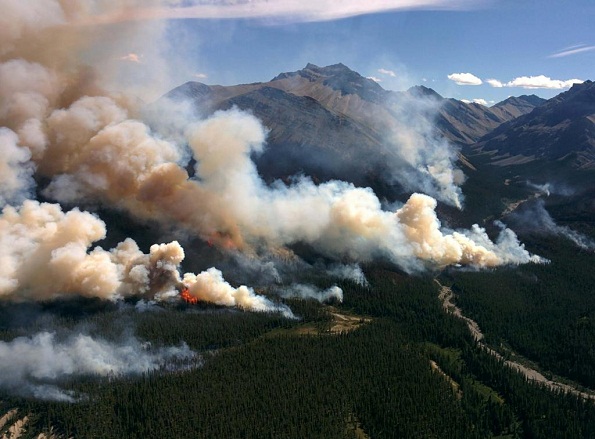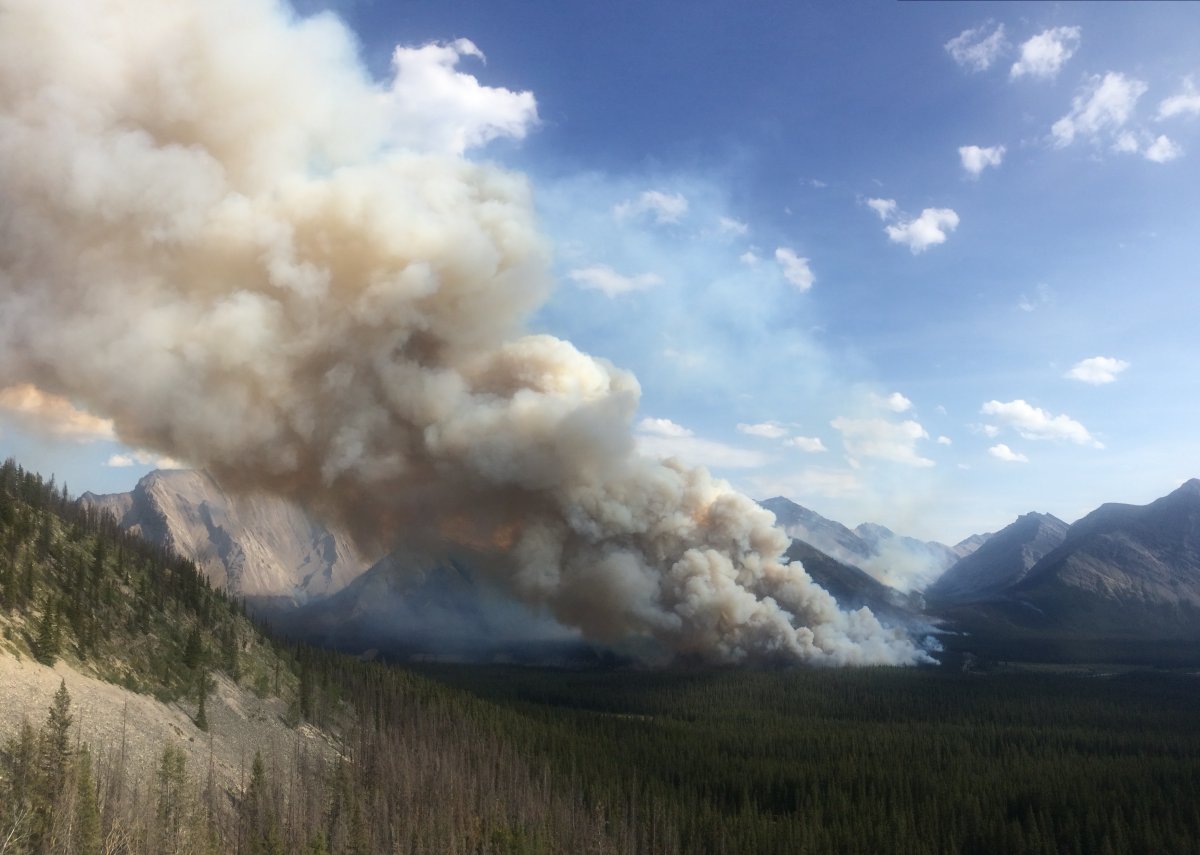BANFF – Parks Canada says while a wildfire continues to burn about 80 kilometres north of the Banff townsite,crews have successfully conducted a burnout operation that should help to contain the blaze.

On Sunday, afternoon, Parks Canada fire crews worked to remove unburned fuels next to natural barriers to the fire. Officials say the blaze has grown in size from 400 hectares to about 700 since Friday.
Officials say fire activity at Snarl Peak has increased over the weekend due to high temperatures, low humidity and high winds. Smoke columns were visible from the Icefields Parkway and east toward the Sundre area Saturday and Sunday.
Parks officials suggest lightening sparked the fire on the northern slopes of Snarl Peak, roughly 80 kilometres north of the Banff townsite, on July 14.
They have now set up remote weather stations and cameras to monitor the weather and the fire activity.
Fire crews are now using “indirect fire management techniques” to continue to manage the fire. That includes strategic sprinkler lines placed in areas around the fire as well as natural barriers to contain the fire.
“If the challenges these barriers at any time, management will use additional burnout operations to remove any additional fuel ahead of the fire,” says Dani McIntosh, Fire Information Officer with Banff National Park.
The Snarl Peak area has been designated as a “green zone” which means there are few “values” or nearby properties at risk. That means Parks Canada will try to allow the fire to burn as much as possible.
“There’s a warden cabin, it’s called the Indian Head Warden Cabin, and an associated cultural site next to it, so we’re really watching closely to make sure that those areas are protected,” says McIntosh.
The park has closed the area from the lower Clearwater River Valley at the Roaring Creek/Martin Lake junction to the eastern park boundary near Indianhead Creek.






Comments